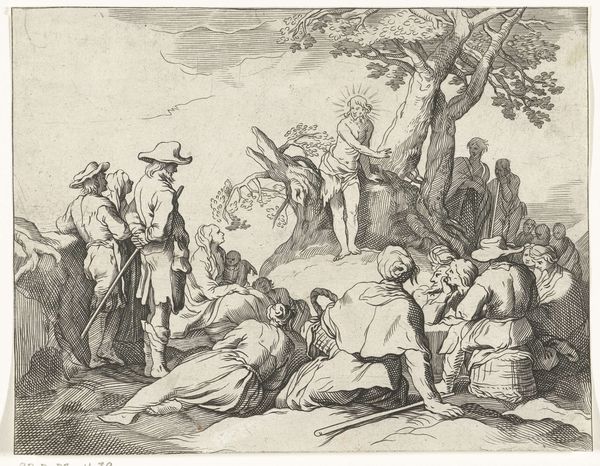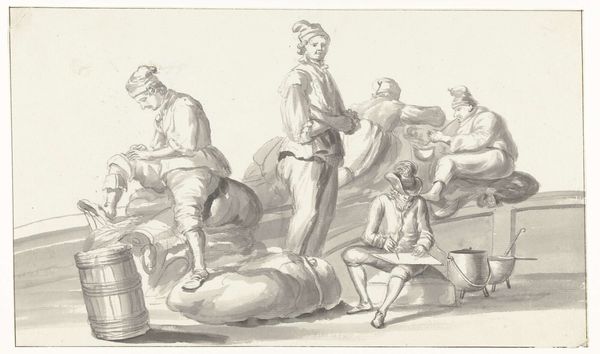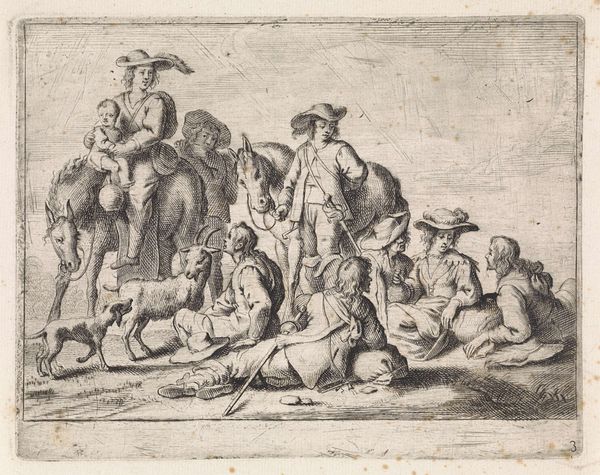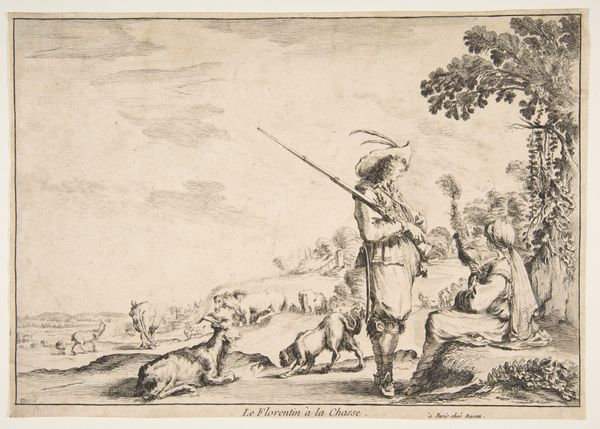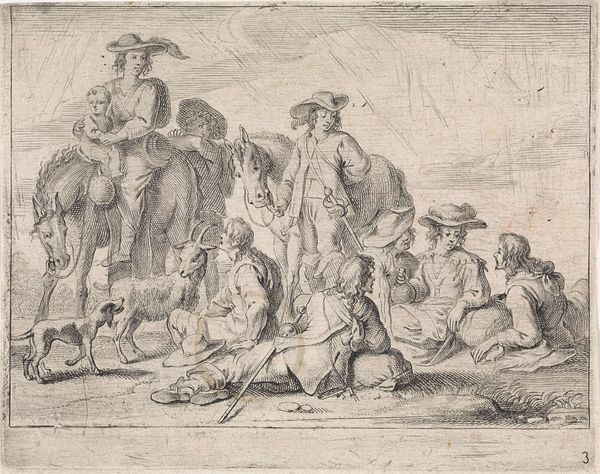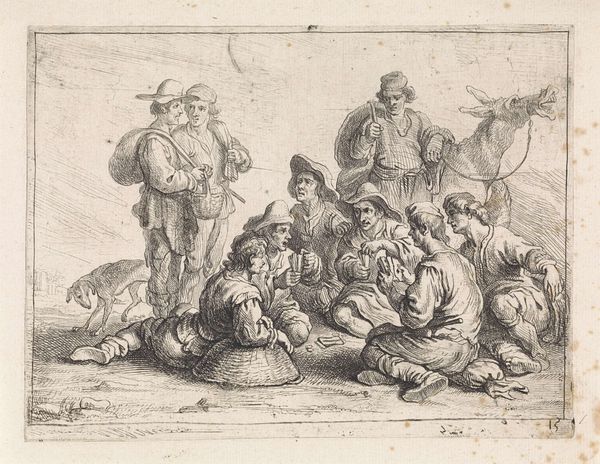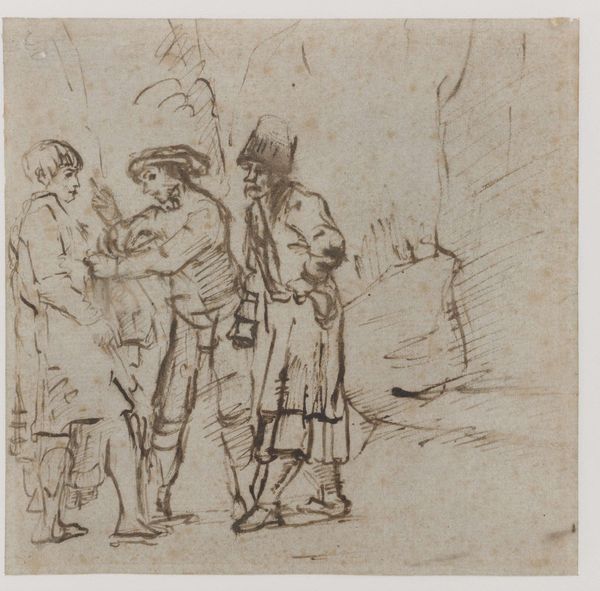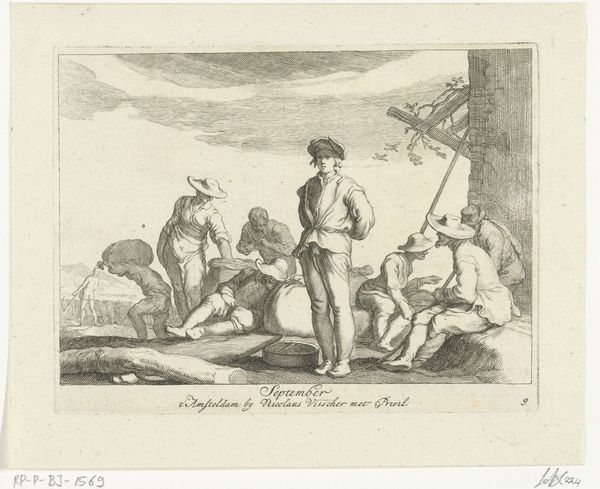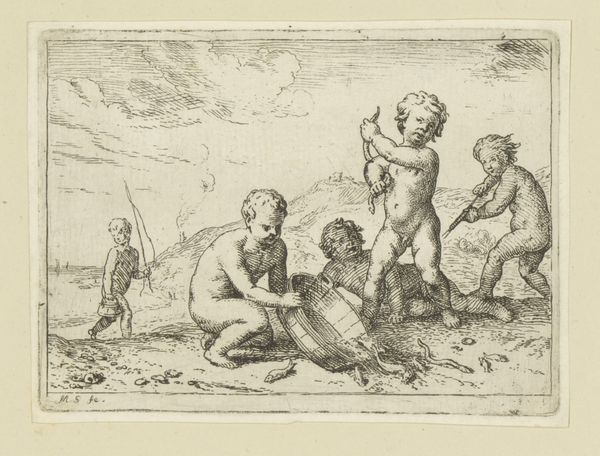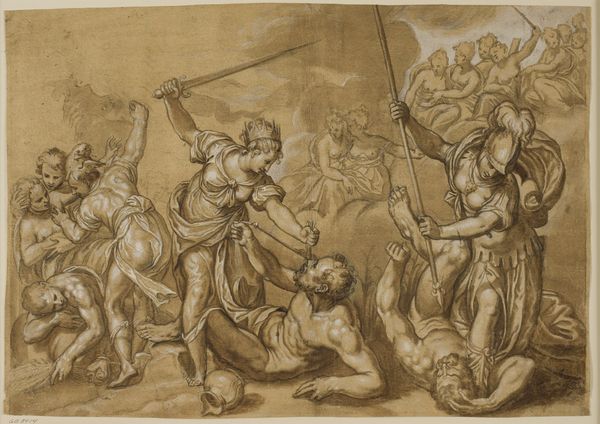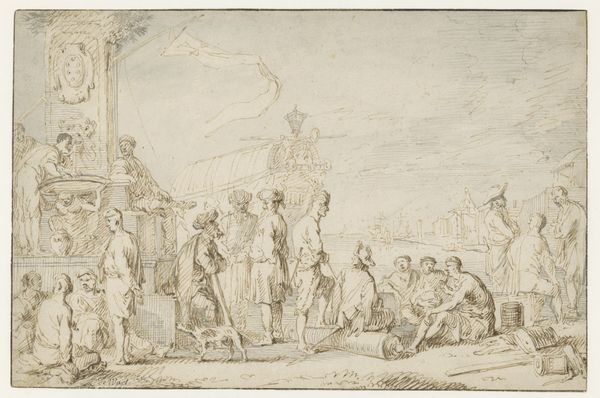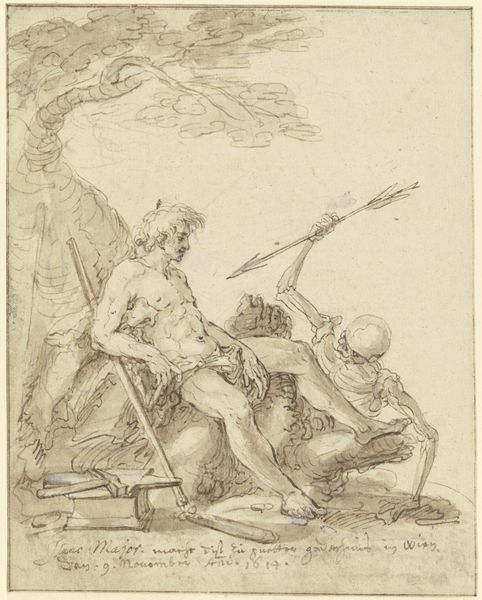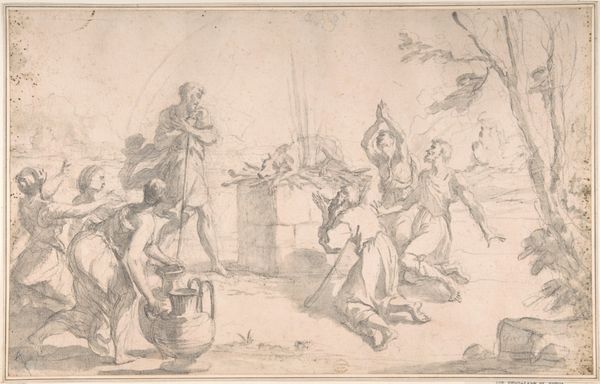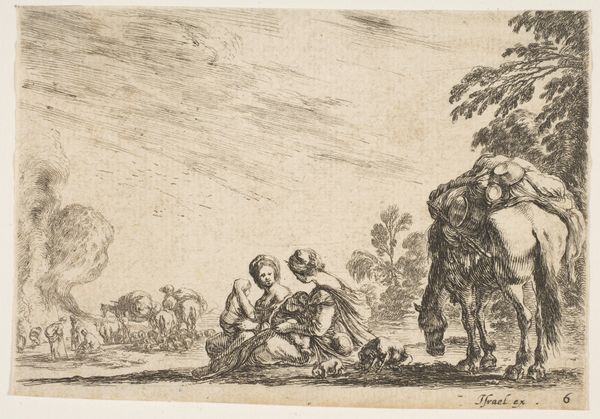
drawing, paper, ink
#
drawing
#
baroque
#
landscape
#
figuration
#
paper
#
ink
#
genre-painting
#
realism
Dimensions: height 100 mm, width 153 mm
Copyright: Rijks Museum: Open Domain
Editor: Here we have Abraham Bloemaert's "September," made with ink on paper sometime between 1574 and 1651. I find the scene really engaging—there’s so much labor depicted. What draws your eye in this drawing? Curator: What strikes me is the sheer representation of labour. Notice how Bloemaert chooses to depict figures not as idealized forms, but as workers caught in the midst of their seasonal routines. The material realities of their existence – the sweat, the toil, the weariness – are central. Editor: So it’s not just *what* they’re doing, but *how* they’re doing it that’s important? Curator: Precisely! Consider the clothing, rendered simply but effectively with ink strokes: practical, durable fabrics designed for physical labour. Are these materials glorified, or honestly rendered in a historical context of their material use? Bloemaert’s skill wasn't necessarily portraying perfect figures; rather the tools of agrarian society, social norms, and expectations. Editor: It makes you think about the artist’s choices, like selecting ink and paper for such a weighty theme. Why not oil paints on canvas? Curator: A fascinating point. The intimacy afforded by the medium – ink on paper – brings us closer to the artist’s hand and thought processes. Drawing allows for immediate corrections and explorations. One has to imagine Bloemaert engaging in society's labor. The lines of this medium allow Bloemaert the freedom to engage. The means of production and circulation are key to understanding it. Editor: I see it! Looking at it now, I wonder, does choosing simpler materials level any hierarchy? Curator: Absolutely. By choosing a medium that historically resides outside the "high art" tradition of oil painting and monumental formats, Bloemaert subtly elevates the lives and experiences of common workers to a status worthy of artistic consideration. The paper and ink don’t obfuscate but become vital in understanding the context. Editor: That’s given me a whole new perspective. I was so focused on the activity, I missed how the materials themselves contribute to the message! Curator: Exactly. By analyzing how this drawing came to be, we’ve moved away from simply *looking at* art and moved toward *understanding* its broader significance within society.
Comments
No comments
Be the first to comment and join the conversation on the ultimate creative platform.
